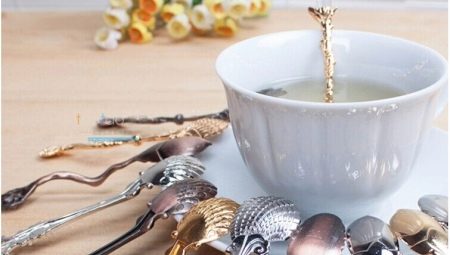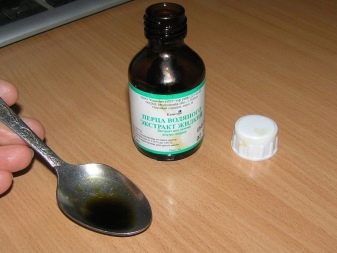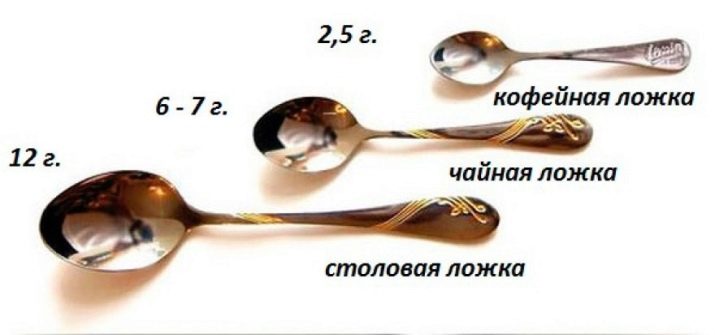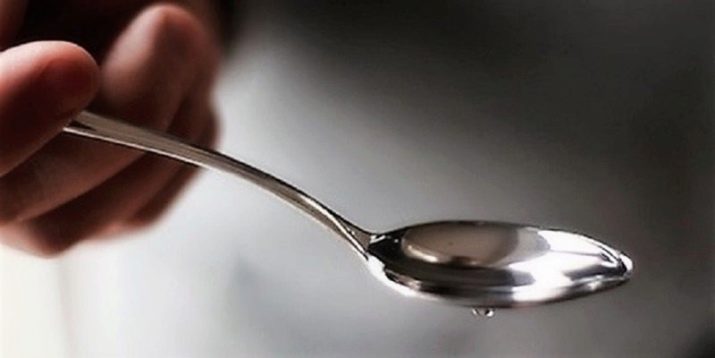Teaspoons: description and volume

A teaspoon has long been present in our everyday life. Knowing its volume in milliliters and weight in grams, you can safely prepare any culinary recipe. So, a spoon of a certain size will be for us the main measure for measuring the components we need. When is it better to use disposable products, what is the long-handled spoon for? The answers to these and other questions are in our article.


Peculiarities
The very first reference where a spoon is mentioned dates back to the third millennium BC. In Russia, a spoon as a food item was introduced by Prince Vladimir in 998. After the rite of baptism of all the inhabitants of Russia, in order to raise the cultural level, the prince commanded to eat with special devices.
Since that time, the subject of kitchen utensils has changed a lot. Many varieties have appeared, and sometimes it is difficult to figure out where and how it should lie on the table.
The main types of spoons are table, dessert and tea.
- The dining room is used to take the first course.
- Dessert is put if pudding, tiramisu, halva, cheesecake, parfait, berries with cream and other soft desserts are served. It is smaller in size than the dining room.
- A teaspoon is so called because it was an indispensable attribute of tea drinking for stirring sugar or jam, it is served with a pair of tea.
The first known mention of a teaspoon dates back to the 18th century. A teaspoon is a small spoon with an oval or rounded bowl and a 15 cm long flat, faceted or twisted handle. It looks like a dining room or dessert, but somewhat smaller. Used for eating desserts and drinks - tea, cocoa, hot chocolate.


Capacity
A spoon is a universal thing.It is used in church during the sacrament, music people play them like a percussion instrument. Pharmacists made the dosage of drugs based on the size and volume of the spoon. When writing down the recipe, the pastry chefs noted how much of the required ingredients were needed to prepare the dish, along with the measure of the weights.
It became necessary to standardize the measure of a spoon. After all, the container cannot be the same size for the first course and dessert.
The popularity of tea drinking has provoked the birth of a spoon for a tea meal. Often in culinary recipes, the required composition of the components in tablespoons and teaspoons is indicated. Therefore, you need to know how much of the ingredient fits in the volume of 1 spoon in ml and mg.
Water is best for measuring volume. There are only 5 milligrams of liquid in a teaspoon and it fills only a third of a tablespoon, and a coffee spoon only fills a quarter.


Other products will have completely different volumes. It is also necessary to take into account the recommendations for the recipe, it is written somewhere - with a slide, and therefore the volume will be slightly larger.

We give a table for food products, in accordance with the volume.
Components | Volume, ml |
Water | 5±0,1 |
Melted margarine | 4±0,1 |
Vegetable oil | 5,1 |
Butter | 5,0 |
Whole milk | 5,0 |
Apple cider vinegar | 5,0 |
Soy sauce | 5,0 |
Tomato paste | 5,0 |
Liquor | 7,0 |
Peanut paste | 8,0 |
Mayonnaise | 10,0 |
Honey | 10,0 |
Sour cream | 10,0 |
Condensed milk | 12,0 |
Fruit puree | 17,0 |
Jam | 17,0 |

And now a gramme for cereals, tea and other dry ingredients. The weight of a teaspoon is directly related to the density of the substance, it is less than 0.5 grams or more.
Components | Weight, g no top | Weight, g with top |
Tea | 2±0,1 | 3±0,5 |
Medicinal herb | 2,1 | 3,3 |
Cornflakes | 2,0 | 4 |
Dry mustard | 4,0 | 7 |
Rice | 5,0 | 8 |
Ground crackers | 5,0 | 7 |
Dry yeast | 5,0 | 8 |
Dry cream | 5,0 | 6 |
Lemon acid | 5,0 | 8 |
Gelatin | 5,0 | 8 |
Ground pepper | 5,0 | 8 |
Oat flakes | 6,0 | 8 |
Starch | 6,0 | 9 |
Lentils | 7,0 | 9 |
Ground coffee | 7,0 | 9 |
Buckwheat | 7,0 | 10 |
Raisin | 7,0 | 10 |
Sugar | 7,0 | 10 |
Soda | 7,0 | 10 |
Extra salt | 7,0 | 10 |
Ground cinnamon | 8,0 | 12 |
Poppy | 8,0 | 12 |
Groats (pearl barley, barley) | 8,0 | 11 |
Semolina | 8,0 | 12 |
Flour | 9,0 | 12 |
Cocoa powder | 9,0 | 12 |
Egg powder | 10,0 | 12 |
Nuts | 10,0 | 13 |
Powdered milk | 12,0 | 14 |
Knowing the volume (how many milliliters are in a teaspoon) helps to measure the weight of products, various liquids in the manufacture of any recipe.

Varieties
In the 18th century, numerous coffee and tea houses were opened and, naturally, new dishes, necessary for tea drinking, coffee appeared. There are new rules of etiquette, which are pushing for the manufacture of tea and coffee spoons.
A teaspoon can serve different purposes. Depending on which meal she participates in, her appearance changes:
- a spoon for chilled drinks is similar to a teaspoon, only the handle is longer;


- fruit spoons have sharp teeth around the edge of the spoon's cup;

- ice cream spoons resemble a scapula with curved edges;

- bar spoons represent various devices for mixing cocktails, making absinthe;

- a spoon for olives with an elongated handle and a small bowl with a hole in the middle - the brine flows down, the olive remains on the spoon;


- a caviar spoon has a slightly rectangular bowl shape and a slightly longer handle than a teaspoon.

It is easy to understand that all these types of spoons will differ not only in size, but in volume.
For the manufacture of teaspoons, as a rule, they use stainless steel, silver, gold, non-ferrous metal alloys. It is extremely rare to carve spoons from wood; they are suitable as a gift copy.


Look impressive and unusual ceramic teaspoons. Ceramic sets are beautifully presented, where a tea pair and a spoon look like a single whole. Silver, gold tea spoons with ceramic handle are exquisitely made. For a cafe it is worth buying comfortable and beautiful tea utensils, visitors will be pleasant and comfortable, because everything depends on the little things.


Have won their popularity and disposable plastic teaspoons made from polystyrene. The beauty of these spoons is that they are not washed and thrown away after use. They are necessary for going out into nature, on hikes, on trips.When traveling out of town, collect the used plastic dishes in trash bags for further disposal.

How to choose?
If you decide to purchase tea appliances for yourself or make a gift, then when choosing these items, pay attention:
- for the quality of steel and its impurities - for stainless steel products;
- for trial with a stigma - on silver items;
- the device must not smell of chemistry;
- buy spoons from a well-known manufacturer who has accompanying documents that guarantee their quality;
- high-quality tea utensils should not be lightweight and thin;
- when choosing spoons made of silver, take silver of a high standard; with a high silver content, the alloy is cleaner, the quality is higher.
It is customary to give silver devices for the christening of a child, in honor of the first tooth, on a birthday, at a wedding. You need to be especially scrupulous when choosing a gift for an infant. High quality table silver always has a hygienic certificate.
Pay attention to what the silver item is covered with. If it will be used for eating, and not acting as a souvenir, then it can only be covered with gold. If the coating is made of rhodium, varnish, enamel, such devices can be used only as souvenirs.


Silver teaspoons are in great demand nowadays, they are purchased at retail and in sets at an acceptable cost. Silver tea appliances have many advantageous differences - graceful shapes, additional decorations, unusual works of the master.
It is always pleasant to give high-quality gifts, especially silver items... Such gifts remain in memory for a long time and are used in household use. Typically, silver spoons are given with an engraving that is applied to the back of the handle, where you can indicate the date of birth of the child, the date of the wedding anniversary, or any other reminder in honor of which the gift is made.


Storage and care
Over time, silver dims and becomes less attractive, but to prevent this from happening, it must be properly stored and looked after.
- Silver items are stored separately from other dishes, preferably in velvet cases.
- It is recommended to keep silver in a room with low humidity, to avoid contact with gas, rubber products, products containing sulfur particles, they can contribute to the clouding of silver.
- Parchment and foil are best suited for storage. They will protect the silver from oxidation.
- One of the main rules for caring for silver spoons is to dry thoroughly with a soft towel, do not leave them wet. Do not wash them in the dishwasher, stains and plaque may appear, which will then be difficult to remove.
- In order for silver to shine and delight in appearance, it must sometimes be cleaned with ammonia, citric acid, and vinegar. Each component must be diluted with water in a ratio of 1: 10, put silver in the solution for an hour, then wipe well with a soft cloth.
- Ordinary baking soda will help to wash silver things from plaque - dissolve 30 grams of soda in 100 ml of water, put silver in the resulting solution for 2-3 hours. For the greatest effect, you can put it on fire and let it boil a little.
- A decoction of potatoes helps to restore shine. Put the silver item in the broth for 15 minutes, and it becomes like new.
- Great for cleaning silver spoons using toothpaste. Apply the paste to a flannel cloth and wipe down the spoons.
- You can purchase silver care products from hardware stores.


See the video below for tips on how to care for teaspoons.








